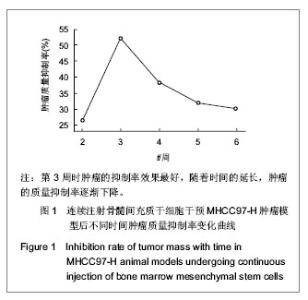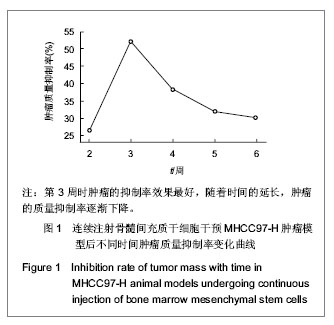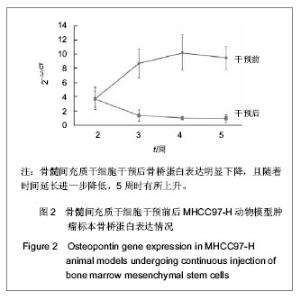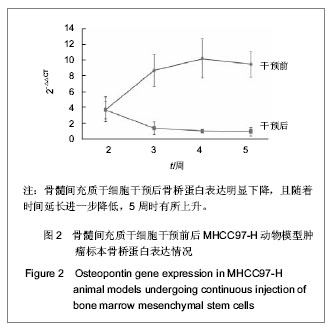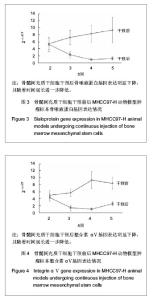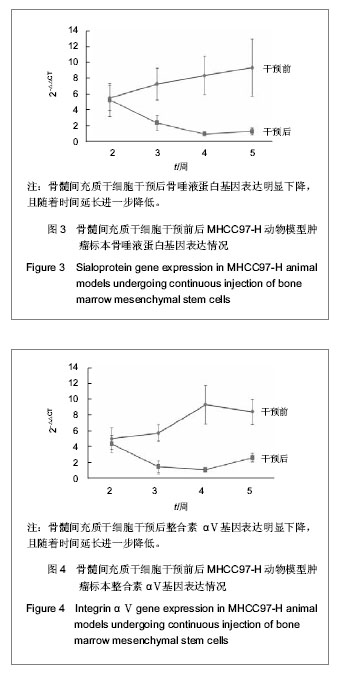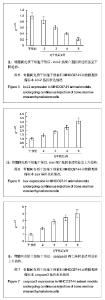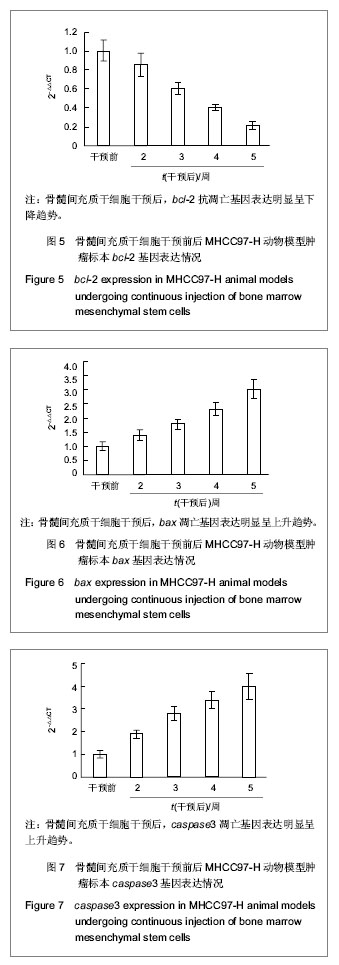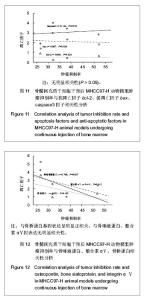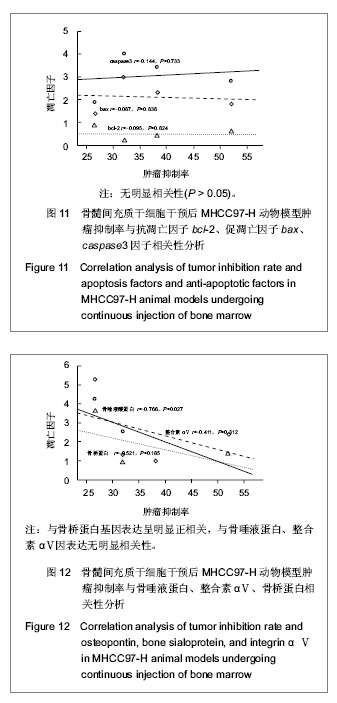| [1] 汤钊猷. 从肝癌看癌症临床研究[J].肿瘤,2009,29(1):1-4[2] Petersen BE,BowenWC,Patrene KD,et al.Bone marrow as a potential source of hepatic oval cells.Science.1999; 284 (5417): 1168-1170.[3] Pittenger MF, Mackay AM, Beck SC, et al. Multilineage potential of adult human mesenchymal stem cells. Science. 1999;284(5411):143-147.[4] Choi D,Kim JH,Lim M ,et al.Hepatocyte-like cells from human mesenchymal stem cells engrafted in regenerating rat liver tracked with in vivo magnetic resonance imaging.Tissue Eng Part C Methods.2008;14(1):15-23.[5] Nasir GA, Mohsin S, Khan M,et al. Mesenchymal stem cells and Interleukin-6 attenuate liver fibrosis in mice. J Transl Med. 2013;11(3):78.[6] Pittenger MF, Mackay AM, Beck SC, et al. Multilineage potential of adult human mesenchymal stem cells. Science. 1999;284(5411):143-147.[7] Yagi H,Soto-Gutierrez A,Parekkadan B,et al. Mesenchymal stem cells: Mechanisms of immunomodulation and homing. Cell Transplant. 2010; 19(6): 667-679.[8] Barzilay R, Melamed E, Offen D. Introducing transcription factors to multipotent mesenchymal stem cells: making transdifferentiation possible. Stem Cells. 2009;27(10): 2509-2515.[9] Choi D,Kim JH,Lim M ,et al.Hepatocyte-like cells from human mesenchymal stem cells engrafted in regenerating rat liver tracked with in vivo magnetic resonance imaging.Tissue Eng Part C Methods.2008;14(1):15-23.[10] Wu XZ, Yu XH.Bone marrow cells: the source of hepatocellular carcinoma? Med Hypotheses. 2007;69(1): 36-42. [11] Sato Y,Araki H,Kato J,et al.Human mesenchymal stem cells xenografted directly to rat liver are differentiated into human hepatocytes without fusion.Blood. 2005;106(2):756-763. [12] Choi D, Kim JH, Lim M, et al. Hepatocyte-like cells from human mesenchymal stem cells engrafted in regenerating rat liver tracked with in vivo magnetic resonance imaging. Tissue Eng Part C Methods. 2008;14(1):15-23.[13] Snykers S,Vanhaecke T,Papeleu P,et al.Sequential exposure of cytokines reflecting embryogenesis: the key for in vitro differentiation of adult bone marrow stem cells into functional hepatocyte-like cells.Toxicological sciences: an official journal of the Society of Toxicology.2006;94(2): 330-341.[14] Wong RS. Mesenchymal stem cells: angels or demons? J Biomed Biotechnol. 2011;2011:459510.[15] Patel DM, Shah J, Srivastava AS.Therapeutic potential of mesenchymal stem cells in regenerative medicine. Stem Cells Int. 2013;2013(3):496218. [16] Choi D,Kim JH,Lim M ,et al.Hepatocyte-like cells from human mesenchymal stem cells engrafted in regenerating rat liver tracked with in vivo magnetic resonance imaging.Tissue Eng Part C Methods.2008;14(1):15-23.[17] Snykers S,Vanhaecke T,Papeleu P,et al. Sequential exposure of cytokines reflecting embryogenesis: the key for in vitro differentiation of adult bone marrow stem cells into functional hepatocyte-like cells.Toxicol Sci.2006; 94(2):330-341.[18] 姜晗防,任军.小鼠骨髓问充质干细胞接种小鼠肝癌组织诱发肝癌细胞坏死[J].北京大学学报:医学版,2008,40(5):435-458.[19] Barzilay R, Melamed E, Offen D. Introducing transcription factors to multipotent mesenchymal stem cells: making transdifferentiation possible. Stem Cells. 2009; 27(10): 2509-2515.[20] Sun XY, Nong J, Qin K, et al. MSC(TRAIL)-mediated HepG2 cell death in direct and indirect co-cultures. Anticancer Res. 2011;31(11):3705-3712.[21] Kucerova L, Matuskova M, Hlubinova K, et al. Tumor cell behaviour modulation by mesenchymal stromal cells. Mol Cancer. 2010;9:129.[22] Aquino JB, Bolontrade MF, García MG,et al. Mesenchymal stem cells as therapeutic tools and gene carriers in liver fibrosis and hepatocellular carcinoma. Gene Ther. 2010;17(6): 692-708.[23] 王婷,曲迅,郑广娟,等.骨桥蛋白及其信号通路对肿瘤侵袭调控的研究进展[J].中华肿瘤防治杂志, 2008,15(5):393-395. [24] Giannelli G,Bergamini C.Human hepatoccllular carcinoma require both alpha3beta1 integrin and matriMetalloproteinases activity for migration and invasion. Lab Invest. 2001;81(4):6l3-627.[25] Fransvea E, Mazzocca A, Antonaci S, et al. Targeting transforming growth factor (TGF)-betaRI inhibits activation of beta1 integrin and blocks vascular invasion in hepatocellular carcinoma. Hepatology. 2009;49(3):839-850.[26] 王艳红,李立新,孙瑞霞,等.αvβ3抗体对人肝癌细胞系MHCC97的粘附抑制作用[J].中华实验外科杂志,2006, 23(5): 634.[27] Li GC, Ye QH, Dong QZ, et al. Mesenchymal stem cells seldomly fuse with hepatocellular carcinoma cells and are mainly distributed in the tumor stroma in mouse models. Oncol Rep. 2013;29(2):713-719.[28] Choi D,Kim JH,Lim M ,et al.Hepatocyte-like cells from human mesenchymal stem cells engrafted in regenerating rat liver tracked with in vivo magnetic resonance imaging.Tissue Eng Part C Methods.2008;14(1):15-23.[29] 李天然,杜湘珂,宋斌,等.经基因修饰的骨髓间充质干细胞对高低转移潜能肝癌细胞干预的实验研究[J].胃肠病学与肝病学杂志, 2013.[30] Brinkmann U, Mueller RH, Babel W. The growth rate-limiting reaction in methanol-assimilating yeasts. FEMS Microbiol Rev. 1990;7(3-4):261-265. |
